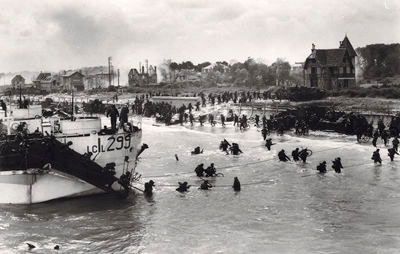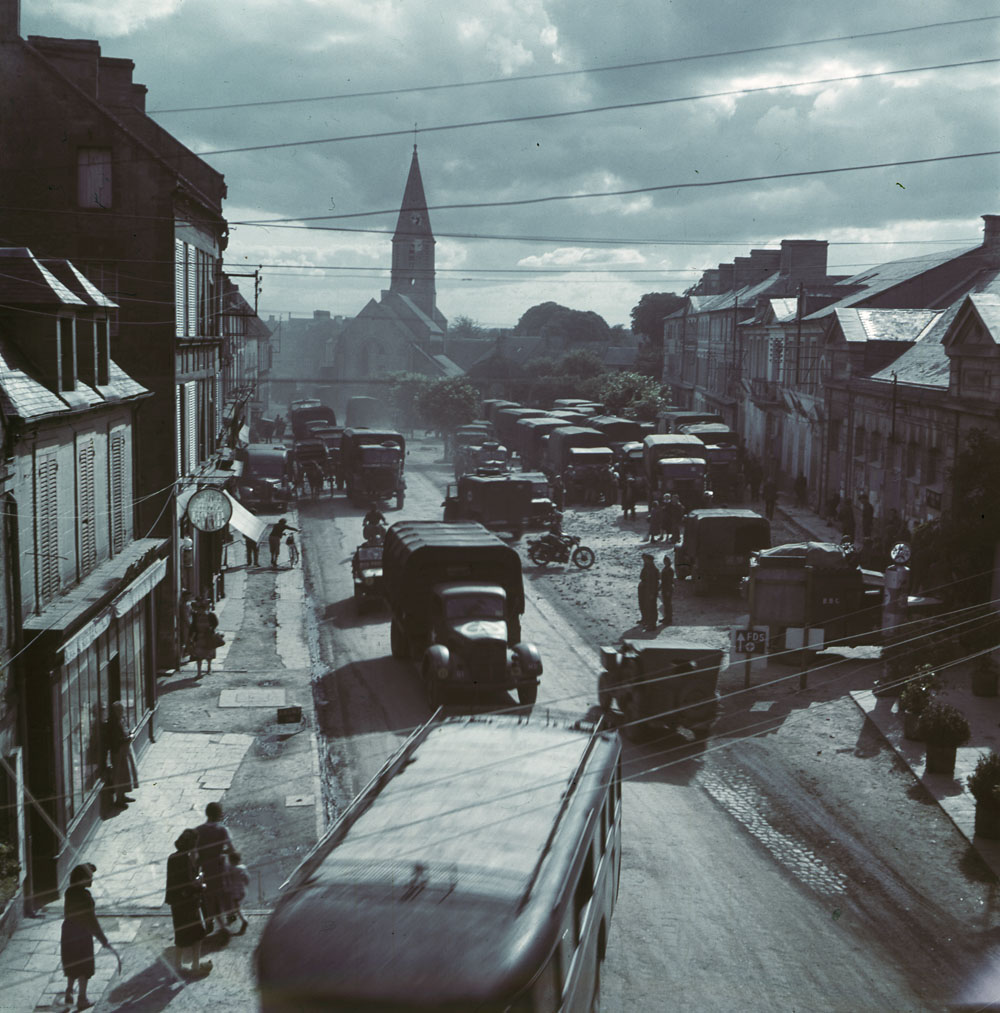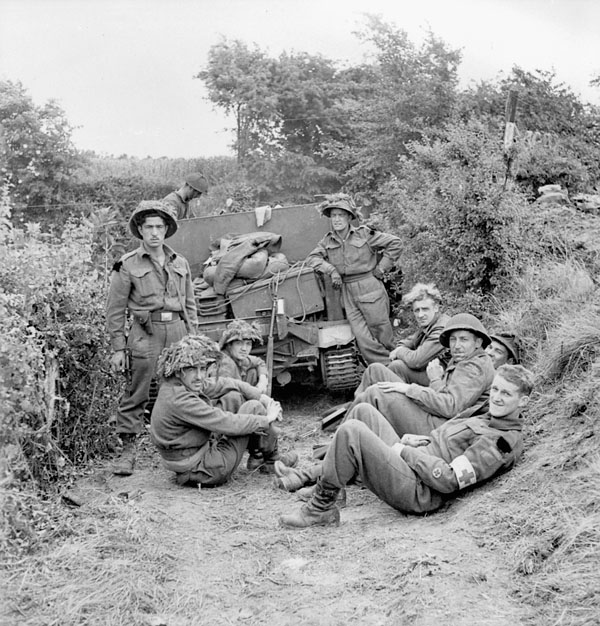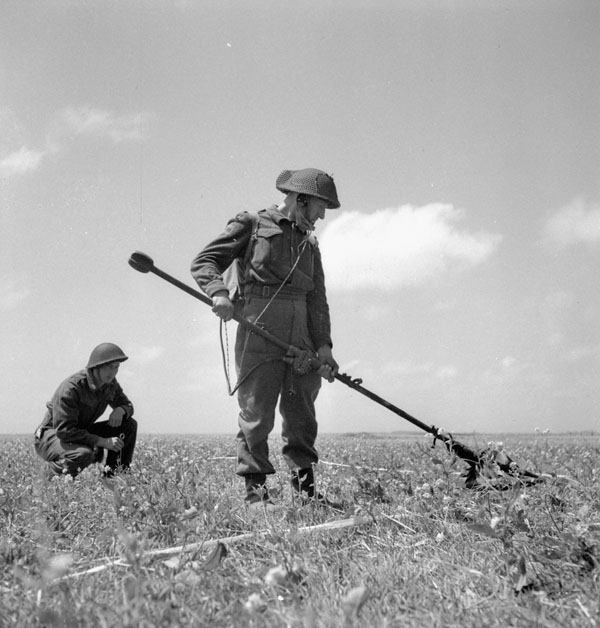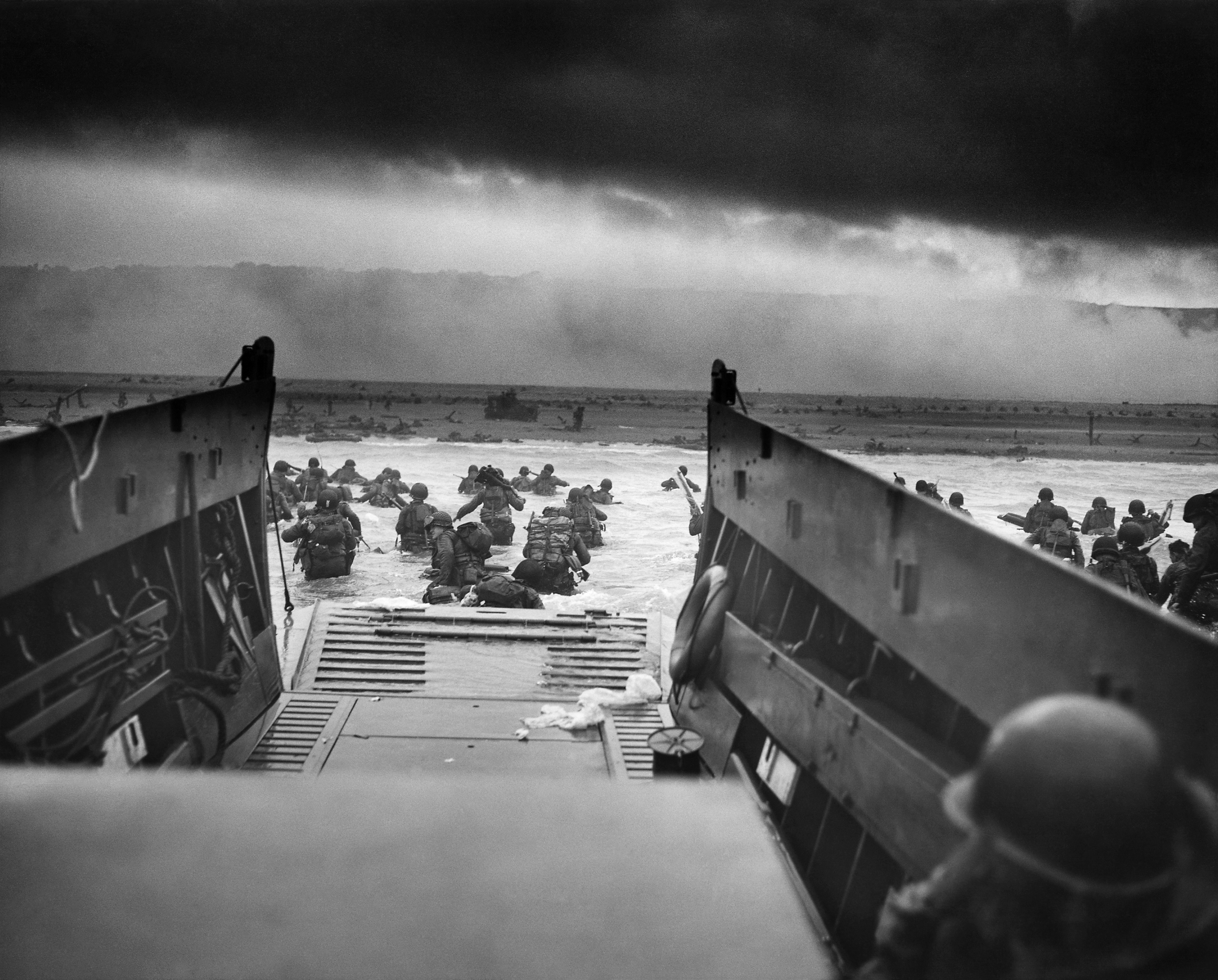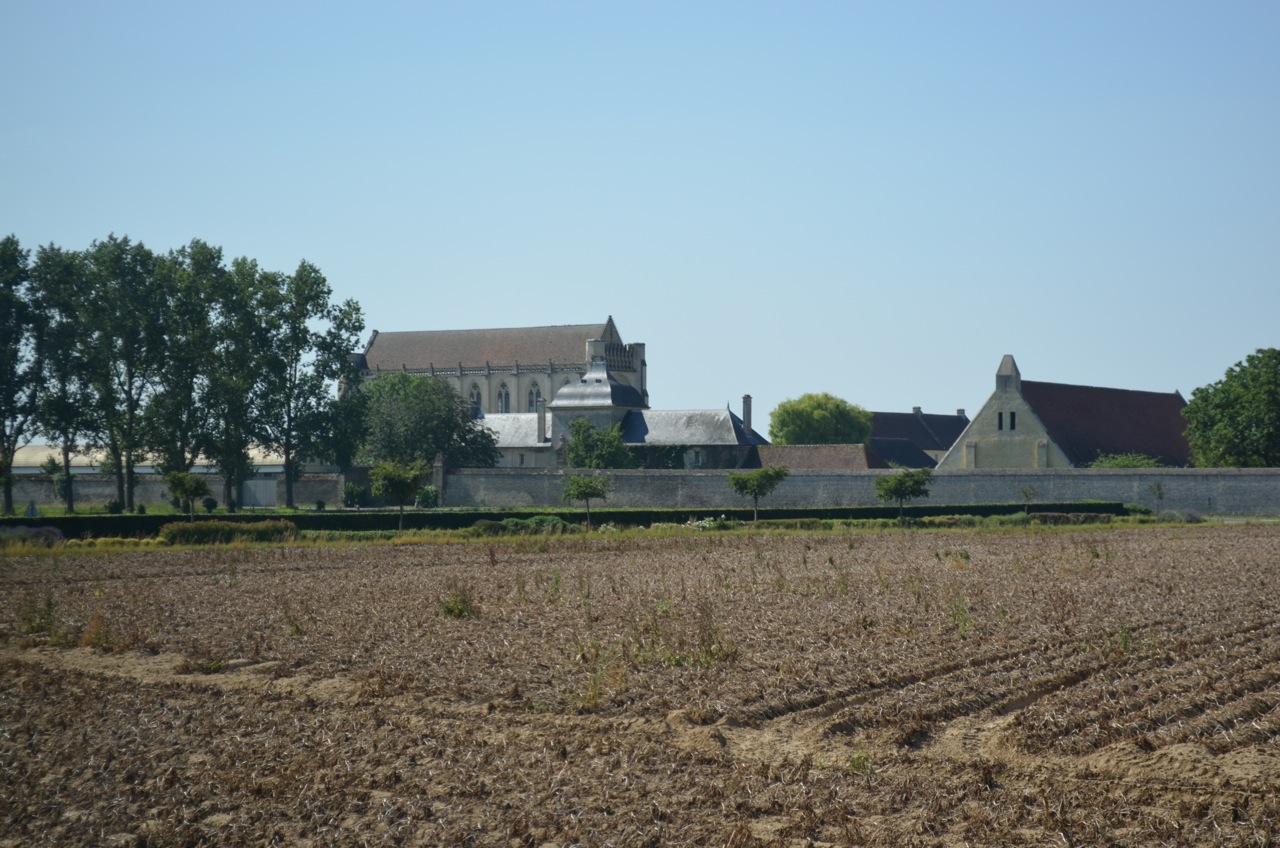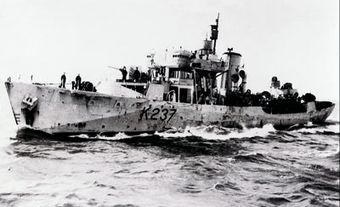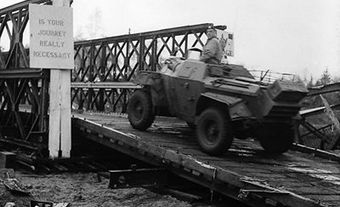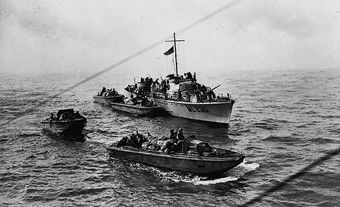The 1944 Battle of Normandy — from the D-Day landings on 6 June through to the encirclement of the German army at Falaise on 21 August — was one of the pivotal events of the Second World War and the scene of some of Canada's greatest feats of arms. Canadian sailors, soldiers and airmen played a critical role in the Allied invasion of Normandy, also called Operation Overlord, beginning the bloody campaign to liberate Western Europe from Nazi occupation. Nearly 150,000 Allied troops landed or parachuted into the invasion area on D-Day, including 14,000 Canadians at Juno Beach. The Royal Canadian Navy contributed 124 vessels and 10,000 sailors and the Royal Canadian Air Force contributed 39 squadrons to the operation. Total Allied casualties on D-Day reached more than 10,000, including 1,096 Canadians, of whom 381 were killed in action. By the end of the Battle of Normandy, the Allies had suffered 209,000 casualties, including more than 18,700 Canadians. Over 5,000 Canadian soldiers died.
(This is the full-length entry about D-Day and the Battle of Normandy. For a plain-language summary, please see D-Day and the Battle of Normandy (Plain-Language Summary).)
Hitler’s Atlantic Wall
Canada had been at war with Germany since 1939, and by 1944 the tide had turned in favour of the Allies. The Battle of the Atlantic was largely won, the Allies were advancing through Italy (see Battle of Ortona), and in the east, the Soviets were rolling back the German war machine in Russia. For years, Soviet leader Joseph Stalin had pressured the British and Americans to open another front in the war, by invading occupied France in the west. In the summer of 1943, the Allies agreed they were ready to launch the invasion the following year. American General Dwight Eisenhower was appointed supreme commander of an amphibious invasion of unprecedented size and scope, code-named Operation Overlord.
The Allies needed a French harbour from which to supply and sustain a successful invasion force. However, the disastrous 1942 raid on the French port of Dieppe, in which 3,367 Canadians were killed, wounded or captured, had convinced military planners that a seaborne assault against a well-defended port was folly (see Dieppe Raid).
In fact, much of the French side of the English Channel had been turned into what was called the “Atlantic Wall” — mile after mile of concrete bunkers, machine gun nests, and other fortifications built by the Germans, overlooking beaches and tidal estuaries strewn with layers of barbed wire, anti-tank ditches, mines and other obstacles designed to obstruct an invading army.
What Does D-Day Mean?
When planning a military operation, the specific date on which the attack would occur was not always known in advance. For that reason, the term D-Day was used to refer to the day on which an attack was to begin. Though the term was used to plan many operations, it is now most associated with the Allied invasion of Normandy, France, on 6 June 1944.
Secrecy and Planning
Faced with such obstacles, as well as battle-hardened German forces led by the legendary General Erwin Rommel, the Allies decided that surprise would be their greatest weapon. The Germans knew an invasion was coming, but not when or where — the most likely place being the Pas de Calais, the French coastline west of the Belgian border, which offered the shortest distance across the Channel, and the quickest route into Germany.
Instead, the Allies set their sights on Normandy, further west. On D-Day, they would attempt to land more than 156,000 soldiers — six infantry divisions, plus armoured units — on five beaches along a 100-km sweep of coastline and also behind enemy lines. American forces would assault two beaches code-named Utah and Omaha, British forces would attack beaches named Gold and Sword, and a Canadian division would assault a beach named Juno. A battalion of Canadian paratroopers would also land behind German lines, along with three divisions of British and US paratroopers, on the flanks of the main invasion force. It was the largest seaborne invasion ever attempted in history. More than 14,000 Canadian soldiers landed or parachuted into France on D-Day. The Royal Canadian Navy contributed 80 vessels, while the RCAF contributed 18 squadrons in direct support of the assault.

Secrecy was deemed essential to success, as was deception. A dummy force (First US Army Group) was built in southeast England, to convince Germany that the invasion was indeed coming in the Pas de Calais. The phantom force was composed of inflatable tanks and fake planes, ships, trucks and other equipment made out of canvas, wood and papier mâché. In addition, the Allies established a second dummy army (Fourth British Army) in Scotland to create the impression that there would be an assault against Norway in conjunction with a Soviet attack from the east. They also broadcast fake radio transmissions about the phantom armies and used double agents to feed the Germans false information.
Meanwhile, the real invasion force was assembled in southwest England, and the entire area was sealed off by military authorities. As soldiers waited in their camps, they pored over maps, photographs and three-dimensional models of the invasion beaches, constructed from information meticulously collected over the previous months. The models and pictures showed the layout of the Normandy coastline and important landmarks — houses, church spires, headlands — so that every officer and soldier would know their objectives and what awaited them.
DID YOU KNOW?
Ernest Adolphe Côté was a prominent member of the Canadian Armed Forces. A lieutenant-colonel in the 3rd Canadian Infantry Division, he was responsible for the logistics and provision of supplies for a division of about 15,000 men and reported to the commander regarding the preparation and execution of administrative plans in support of military operations. He was among a select few officers who were informed of the date and location of the D-Day invasion and was put in charge of planning the logistics for his division in secrecy.
The Invasion Begins
The vast majority of men with the 3rd Canadian Infantry Division and the 2nd Canadian Armoured Brigade, who would go ashore at Juno Beach, had no combat experience. Like Fred Moar, a lieutenant with New Brunswick’s North Shore Regiment, they had been training hard in Scotland and England for more than a year: “We had no idea what we were getting into,” said Moar. “But we were ready for anything. We considered ourselves the best.”
Originally scheduled for 5 June, the invasion was postponed for a day by bad weather. Finally, in the early pre-dawn hours of 6 June — D-Day — waves of aircraft and gliders began delivering paratroopers onto the Norman countryside, many of them missing their landing zones due to anti-aircraft fire and confusion. Many paratroopers also drowned after landing in fields flooded by the Germans.
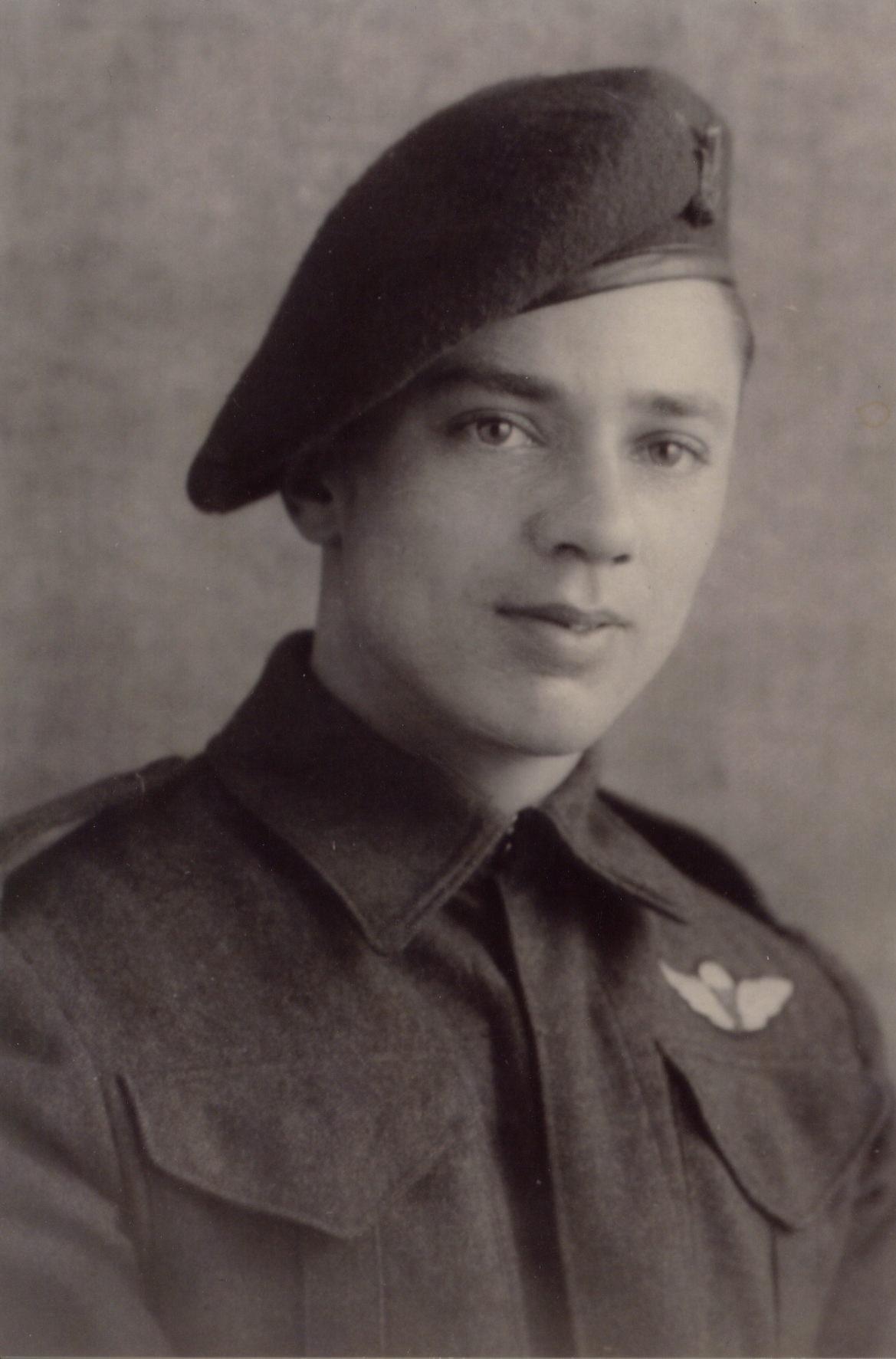
Jan de Vries, a member of 1st Canadian Parachute Battalion, landed several kilometres from his intended drop zone. “I wondered where the heck I was when I hit the ground,” he said. “I spent all night trying to find my way in the dark toward my rendezvous point near the coast, dodging enemy patrols the whole way.”
Involvement of RCN and RCAF
An armada of more than 6,900 ships, including 124 Canadian vessels, supported the invasion, either off the coast or outside the immediate invasion area. Eighty of the RCN ships were in direct support of the landings. This included two destroyers (HMCS Algonquin and Sioux), which bombarded coastal targets, and two landing ships (HMCS Prince Henry and Prince David) carrying a total of 14 assault landing craft. Another 30 large infantry landing craft were manned by RCN personnel. Ten Bangor class minesweepers in the 31st Flotilla cleared lanes ahead of or on the flanks of the assault force, while another six minesweepers were attached to Royal Navy flotillas. Finally, two flotillas of motor torpedo boats (15 MTB in total), guarded the flanks of the invasion fleet.
Eighteen of the 39 RCAF squadrons involved in Operation Overlord flew in direct support of the landings. All were part of the RAF’s 2nd Tactical Air Force (2TAF), which had been created to support the invasion; most flew with No. 83 Group. They consisted of 11 Spitfire squadrons (six day fighter, four top cover and one reconnaissance), three ground attack Typhoon squadrons, two Mustang reconnaissance squadrons and two Mosquito night fighter squadrons. The three Typhoon squadrons saw the most action, as each of them flew three ground attack missions against the German defences on Gold, Juno and Sword beaches during the initial assault, plus an armed reconnaissance mission in the early evening against enemy tanks, trucks and troop carriers.
The Landings
After a naval and aerial bombardment of German shoreline defences, the first waves of landing craft headed for the beaches, packed with anxious, often sea-sick soldiers. The Allied bombardment did little to destroy enemy positions, and soldiers faced resistance as they came ashore on all the beaches, dodging bullets while wading through chest-high seas. But none of the landings were as bloody as on Omaha Beach, where US forces were cut down as they struggled first to cross the wide sands and then scale high bluffs overlooking the beach. Some 2,400 Americans were killed or wounded before Omaha was finally secured, the surf turning red with the blood of the dead and dying.
RICHARD NORRIS, Canadian Navy
Canadian sailor Richard Norris was involved in the landing of troops on Juno Beach during the D-Day operation. In an interview with The Memory Project, Norris recalled the chaos and the losses suffered that day. “But they had smokescreens and it was pandemonium, you really couldn’t say what we were doing because you had to cope with the situations as they arose. …We got to know a lot of these young fellows. I mean, they’re all about our age, 18, 19. We got to know a lot of them, while taking them over, embarking them, you know, and stacking their gear and making sure everything was ready for the fast exit. We got to know quite a few of them; and then I went back in 1999 and we toured all the cemeteries and I see … the names of boys that we put ashore.” Listen to the full interview at The Memory Project archive.
Total Allied casualties on D-Day reached more than 10,000, including 1,096 Canadian casualties, of which 381 were killed in action (340 soldiers, 19 paratroopers, 22 airmen). Thousands of Germans were also killed and captured, and French civilians also died as bullets and bombs rained around their seaside villages ( see La Maison des Canadiens). Although Canadian soldiers pushed farther inland than any others, none of the Allied forces succeeded in reaching their D-Day objectives. But the Normandy beachhead itself was secured, allowing successive waves of troops, tanks, artillery and other supplies to come ashore. On Gold Beach the British began constructing floating “Mulberry” harbours made from massive barge pieces towed across the Channel (see Juno Beach: Day of Courage).
“Atlantic Wall Cracked,” announced the Toronto Daily Star, by the end of the day.
Normandy Campaign
If D-Day was a success, initial Allied efforts to break quickly out of Normandy and begin the march toward Germany were not. Eisenhower and British General Bernard Montgomery expected to have their armies advancing east across France within weeks. Instead, it took a whole summer of hard fighting, often against skilled Nazi panzer (armoured) units, for the Allies to break out of their narrow Normandy bridgehead.
As the Americans battled on the western end of the front and struggled to take the prized port city of Cherbourg, the British and Canadians waged war around the Norman capital city of Caen — originally a D-Day objective that had not been captured. The first week after D-Day, Canadian forces were in the vanguard of the push toward Caen. They encountered fierce opposition from the 12th SS Panzer Division, which infamously murdered as many as 156 Canadian soldiers taken prisoner that week (see Normandy Massacres.)
On 4 July, Canadian units, already worn-out from weeks of hard fighting, began an assault on Carpiquet airport, outside Caen. Major Lockie Fulton, who had stormed Juno Beach with the Royal Winnipeg Rifles, emerged from the battle for Carpiquet as his company’s only surviving officer. He called it his “worst day of the entire war.”

Carpiquet and thereafter Caen fell to the Allies in early July, but weeks of intense fighting remained for the weary Canadian veterans of D-Day, and also for newly arrived, untested soldiers with the 2nd Canadian Infantry Division. Under First Canadian Army commander Lieutenant-General Harry Crerar, the Canadians (assisted by British, Polish and other formations) fought battle after battle, assaulting strategic high points or crossroads south of Caen, at Vaucelles, Bourguébus Ridge and Verrières Ridge.
By early August, the Allied armies had launched a huge pincer movement — with British, Canadian and Polish units moving south towards the town of Falaise, and American forces, having finally broken through enemy lines in the west, circling south and east around what remained of the German Army in Normandy. The Falaise “Gap” through which the Germans were retreating was closed on 20 August, with the linking up of American, Canadian and Polish forces. Scenes of desperate and confused fighting unfolded in the final days of the battle, as the Allies tried to trap German forces on the run. Major David Currie of the South Alberta Regiment was awarded the Victoria Cross for seizing and holding, with his unit, a critical village in the Gap.

Ruth Muggeridge
During the Second World War, Canadian Ruth Muggeridge served as a burn ward nurse in England.
(courtesy The Memory Project)
RUTH MUGGERIDGE, Nurse
During the Second World War, Canadian Ruth Muggeridge served as a burn ward nurse in England. In an interview with The Memory Project, she discusses the hundreds of wounded men arriving in the hours following the invasion of Normandy on D-Day. “We were there [Farnborough, England] as a base hospital until D-Day when they switched our status to a casualty clearing station, and we received the wounded personnel from hospital trains – one after midnight, and one at around three o’clock in the morning – and there were about three hundred or so wounded personnel on each train, so we were all kept very, very busy.” You can listen to the full interview on The Memory Project archive.
Aftermath and Memory
The Normandy campaign finally ended on 21 August 1944, with Canadians playing an important role in closing the Falaise Gap and assisting in the capture of approximately 40–50,000 German soldiers. Now the pursuit of the enemy into the Netherlands, Belgium and Germany could begin.
Total German casualties (killed, wounded and captured) in the Normandy campaign are estimated at more than 300,000, while the Allies suffered 209,000 casualties among the more than two million soldiers landed in France since D-Day. Among the Allied casualties were more than 18,700 Canadians casualties. Over 5,000 Canadian soldiers were killed. Historians estimate that between 13,000 and 20,000 French civilians also died during the campaign.
In the decades following the Second World War, Canadian historians considered the long and tortuous Normandy campaign only a qualified success. The Canadian and British armies were criticized as poorly trained, unaggressive in battle and badly led. C.P. Stacey, Canada’s official war historian, argued that better trained and battle-hardened German forces were overcome not by skilled infantry or armoured units but by Allied air power and “numerical and material superiority.”
More recently, this conventional wisdom has been questioned by historian Terry Copp, one of Canada’s leading experts on the Normandy campaign, who argued in a 2003 book, Fields of Fire: The Canadians in Normandy, that Canadian soldiers deserve credit, not criticism, for their “extraordinary achievement” in France. Copp argues that Canadian and other Allied forces faced not only a formidable enemy with superior tanks and other weapons, but that their assault objectives, from D-Day onward, were exceptionally difficult pieces of ground to capture. Copp also says the much-vaunted Allied air machine did not inflict as much damage on enemy positions through most of the campaign, as originally believed.
“We made mistakes. We weren’t all heroes,” Copp has argued. “But on balance the achievement was absolutely enormous.”
Canada’s sacrifices in Normandy are commemorated there today on dozens of memorials, village cenotaphs, and war cemeteries scattered throughout the region, as well as at the principal Canadian military cemeteries of Bény-sur-Mer and Bretteville-sur-Laize. The Juno Beach Centre, a private museum in Courseulles-sur-Mer, also honours Canada’s role in Normandy.

 Share on Facebook
Share on Facebook Share on X
Share on X Share by Email
Share by Email Share on Google Classroom
Share on Google Classroom

